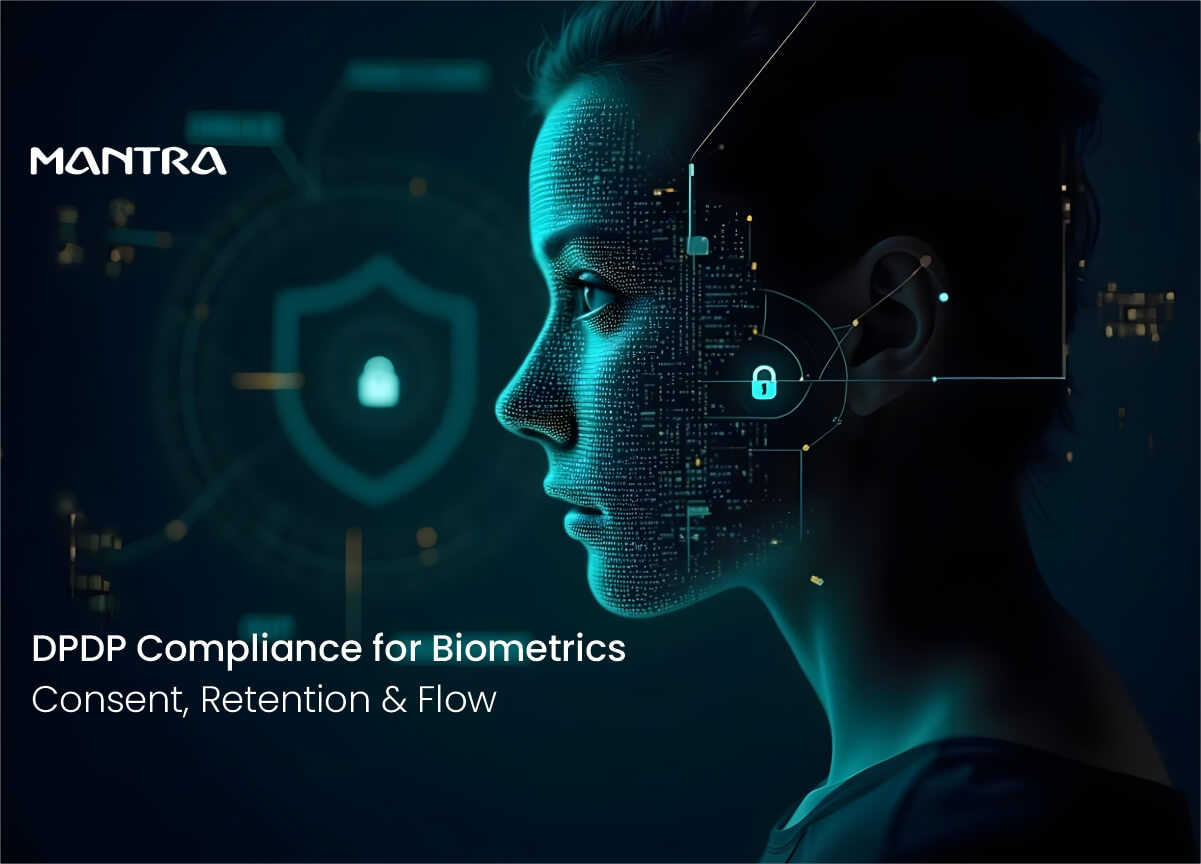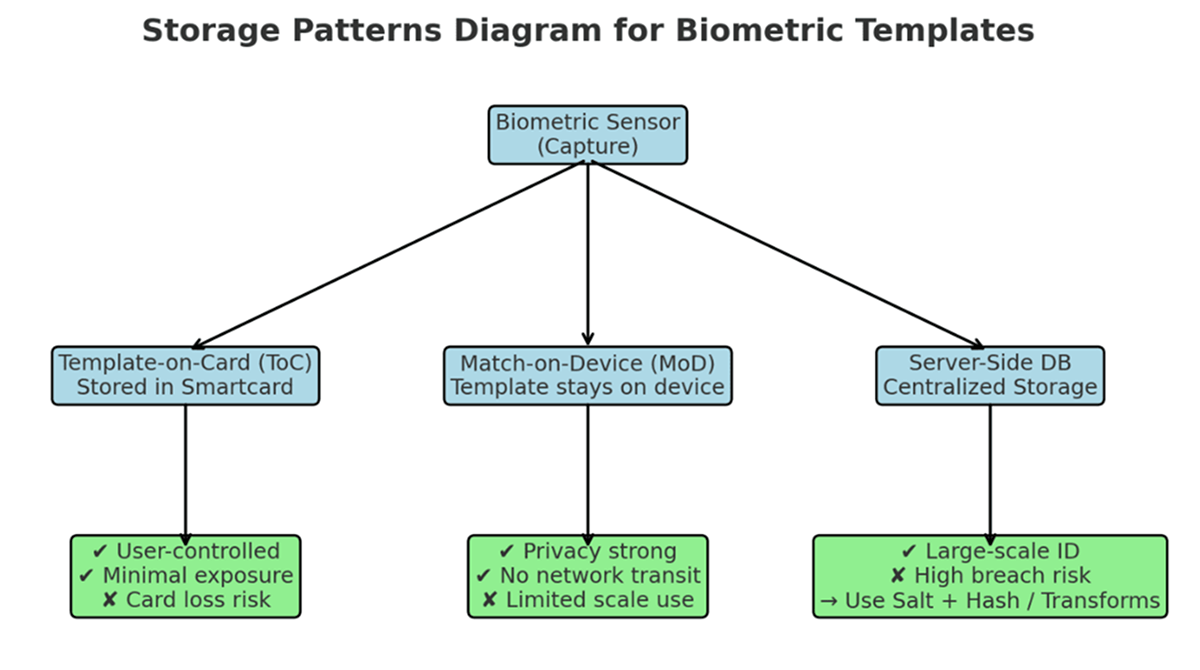
Introduction
Under India's Digital Personal Data Protection (DPDP) Act, 2023, biometric data is classified as a highly sensitive form of "personal data." It refers to any data generated from the technical processing of an individual's physical, physiological, or behavioral characteristics, which allows for their unique identification. This includes, but is not limited to, fingerprints, facial images, iris scans, voice patterns, and gait.
Why Biometrics Need Extra Safeguards
Biometrics—fingerprints, facial recognition, iris, voice, gait—are more than identifiers. They are permanent attributes of identity. Unlike passwords, biometrics cannot be reset after a breach. A leaked fingerprint template or iris code can enable:
Identity theft or impersonation
Fraud in financial services
Unauthorized surveillance
Long-term erosion of trust in digital systems
In India, organizations often deploy biometrics in workplaces, airports, banking, SIM verification, and government welfare schemes. Yet common issues remain:
No informed consent at the point of collection.
Over-collection, such as storing raw images instead of templates.
Unlimited retention with no deletion policy.
Opaque cross-border transfers through cloud vendors.
With the Digital Personal Data Protection Act, 2023 (DPDP Act) now enforceable, these gaps create legal, financial, and reputational risks.
What does DPDP classification means for biometrics?
This classification means that any organization collecting or processing biometric data in India must adhere to strict obligations, including:
Explicit Consent: Obtaining clear, informed, and revocable consent before collection.
Purpose Limitation: Using the data only for the specific, stated purpose it was collected for.
Data Minimization: Collecting only the minimum necessary data (e.g., templates instead of raw images).
Strict Retention Limits: Storing the data only for as long as necessary and securely deleting it afterward.
Failure to meet these heightened safeguards under the DPDP Act can result in significant legal and financial penalties, reflecting the high-risk nature of this unique identifier.
Mapping DPDP Principles to Biometric Systems
The DPDP Act sets out obligations for data fiduciaries (controllers) and data processors. Biometrics are highly sensitive, and so require elevated safeguards.
Lawful Basis & Consent
Default Rule: In India, processing biometrics generally requires explicit consent. This goes beyond a checkbox. It must be:
Informed: The individual understands what is collected, why, and for how long.
Specific: Consent cannot be bundled (e.g., one consent for attendance and marketing).
Granular: Different uses must require separate approvals.
Revocable: Withdrawal of consent must be as simple as giving it.
Exceptions:
State functions under law (e.g., UIDAI Aadhaar authentication).
Emergencies or legal obligations.
But even in such cases, notice is still mandatory.
Sample Notice Text:
"We will collect your fingerprint solely for workplace attendance. Your biometric data will be stored securely in India and deleted within 90 days after your employment ends. You may withdraw consent anytime by contacting the HR helpdesk."
Purpose Limitation & Minimization
The DPDP requires organizations to state and limit the purpose of biometric use. For example:
If the purpose is door access control, do not reuse the same templates for productivity monitoring.
If mobile banking login is the purpose, do not extend it to customer profiling.
Best practices for minimization:
Avoid collecting multiple biometric modalities unless strictly necessary.
Configure devices to perform on-device matching where feasible, reducing central storage risk.
Store templates, not raw fingerprint/iris images.
Retention & Deletion
Biometric data should never be stored indefinitely. The DPDP requires storage only as long as necessary.
Create a written retention schedule.
Automate deletion (e.g., via HR exit workflows).
Maintain logs proving deletion for audit purposes.
Sample Retention Schedule:
| Data Type | Purpose | Retention Period | Deletion Method | Responsible Team |
|---|---|---|---|---|
| Fingerprint Template | Employee attendance | 90 days post-exit | Secure DB wipe | HR + IT Security |
| Access Control Logs | Security audit trail | 12 months | Log rotation/archive | IT Security |
| Visitor Biometrics | One-time access control | 7 days | Auto-purge | Facilities Team |
Tip: Link retention to purpose expiry, not arbitrary fixed dates.

Cross-Border Data Flows
Biometric data often flows to cloud providers or parent companies overseas. Under DPDP:
Cross-border transfers are restricted to "non-restricted jurisdictions." The government will publish a whitelist/blacklist.
If sending to vendors abroad, execute a Data Processing Agreement (DPA) covering:
Purpose limitation (no secondary use).
Security obligations (encryption, access controls).
Breach notification within 72 hours.
Sub-processor approval requirements.
Example: If a biometric attendance system in India stores templates on a U.S. cloud server, the employer must ensure the U.S. is not a restricted jurisdiction and that a binding DPA exists.
Security, Audit & Accountability
The DPDP requires organizations to demonstrate accountability. For biometrics, that means:
Technical Measures:
Encrypt templates at rest and in transit.
Apply anti-spoofing (ISO/IEC 30107 Presentation Attack Detection).
Restrict admin access through multi-factor authentication.
Organizational Measures:
Appoint a Data Protection Officer (DPO) if processing is large-scale or sensitive.
Maintain audit logs of collection, access, and deletion.
Conduct Data Protection Impact Assessments (DPIAs) for new deployments.
Train staff on biometric sensitivity and DPDP obligations.
Fast-Start DPDP Compliance Checklist
Publish plain-language privacy notices at collection points.
Obtain explicit, revocable consent before collection.
Collect only minimum necessary data (templates, not raw images).
Implement a retention schedule and automate deletions.
Restrict cross-border transfers to approved jurisdictions.
Sign DPAs with all biometric system vendors.
Maintain access logs and deletion logs for audits.
Appoint a DPO if processing large-scale biometrics.
Conduct regular DPIAs and security testing.
Train employees handling biometric systems.
Practical Assets for Compliance Teams
Data-Flow Map: Diagram from collection → storage → processing → deletion, with control points.
Sample Notice Texts: Pre-approved templates for workplaces, banks, and apps.
Retention Schedule Template: Editable table for HR, IT, and security teams.
These assets help bridge the gap between legal compliance and practical deployment.
Conclusion
The DPDP Act positions India among the world's leading data protection regimes. For biometric deployments, the stakes are especially high: once leaked, biometrics cannot be re-issued.
By adopting privacy-by-design practices—explicit consent, purpose limitation, strict retention, and secure cross-border controls—organizations can not only stay compliant but also earn user trust.
Comments